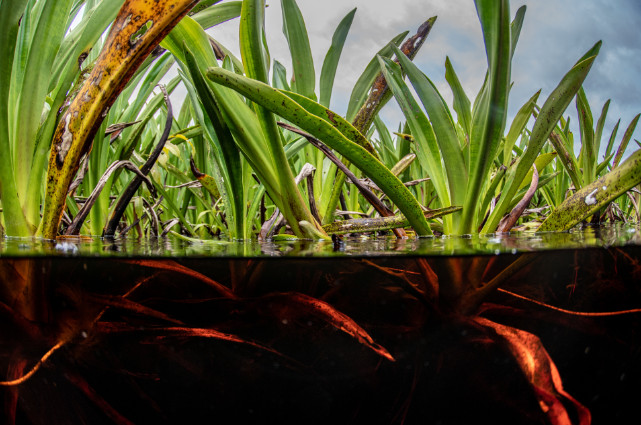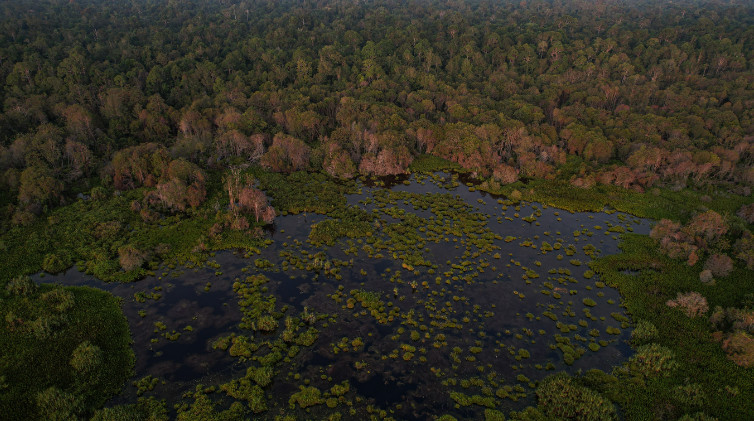July 15, 2024
When it comes to conservation, soil is a topic that’s easily overlooked. And yet, this is one of the most important materials on our planet. It grows our food, stores our water and forms the basis of life on land. Soils have the potential to drastically impact our climate and determine ecosystem health. Understanding them could be key to unlocking the challenge of climate change.
Put simply, life on our planet would not exist without soils (even our planet’s name – Earth – hints at their importance). In nature, soils recycle nutrients and provide the anchor for interconnected webs of life; for people, soils form the basis of agriculture and are essential to food security. And yet, despite their importance, much of what happens in soils remains a mystery.
In this article, we’ll take a closer look at two distinct types of soil – peat and mineral – exploring their unique characteristics and the ecological roles they play. What is mineral soil and what is peat? How are they similar, and how are they different? Why does soil matter? Let’s dig a little deeper in search of answers.
Physical properties
The basic components of any soil are minerals, organic matter, water, and air. But the balance of all these elements together can dramatically change the overall character of the soil and determine its environmental function. Mineral soil and peat soil are made of different materials and formed in different ways. Understanding the differences between them is crucial for sustainable land management and environmental conservation efforts.

Mineral soil is around 45% mineral and only 5% organic matter, with the remaining half split 50:50 between water and air. Peat soil, on the other hand, is around 80% water and 20% organic matter. This makes it characteristically wet and extremely rich in carbon. Both soils are vitally important to their respective habitats; peat is renowned for its ability to sequester carbon and create unique wetland habitats, while mineral soil is the foundation of terrestrial ecosystems and is therefore integral to agricultural productivity.
Composition and formation
Soils can be divided into two main groups: Organic soils, which are formed from sedimentation and primarily composed of organic matter; and mineral soils, which are made from the weathering of rocks and are primarily composed of inorganic material. Peat is undecomposed organic matter, usually derived from plant material. When plants in wetlands die, they are partly broken down into a concentrated layer of moist, nutrient-poor organic matter.
Mineral soils are produced from rocks (referred to in this context as ‘parent material’) through the processes of weathering and natural erosion. Over eons of time, water, wind, changes in temperature, gravity, chemical interactions, living organisms and differences in pressure all help break down parent material into the substance we recognise as mineral soil.
Chemical properties
Mineral soil consists of varying proportions of mineral particles, including sand, silt, and clay, along with organic matter. Mineral soil also has different physical characteristics depending on its texture, which is determined by water retention, drainage, and aeration. It generally has higher nutrient availability compared to peat soil and offers better support for plant root systems. Peat soil is predominantly made up of organic matter derived from plant residues, including mosses, grasses, and other vegetation. It is characterised by its high carbon content and low mineral content. While peat soil has a low pH level as the result of tannin released from the undecomposed plant matter, mineral soil can be acidic, neutral or basic depending on the main original material.
Ecological importance
Peat and mineral soils both play a vital role in their environment. Peat stores more carbon than all the world’s rainforests combined, whereas mineral soil provides all the nutrients essential for plant growth. Together, they keep our planet healthy and fertile.
Peat soil ecosystems, such as peatlands and bogs, provide critical habitats for distinct plant and animal species. They are the world’s largest and most important carbon sinks, which mitigate climate change by sequestering atmospheric carbon dioxide. Peatlands are also proven to regulate water flow, reduce flooding, and filter out pollutants.
Mineral soil supports a multitude of terrestrial ecosystems, including forests, grasslands, and farmland. It sustains biodiversity, provides essential nutrients for plant growth, and contributes to soil stability and erosion control. Mineral soil is the basis of all terrestrial life on Earth.
RER efforts to protect and restore peat soil
Riau is home to one of the largest peatland carbon stores in the world. For that reason, the Restorasi Ekosistem Riau (RER) team works continuously to preserve the precious peat soils, keeping them wet and closely monitoring them for greenhouse gas (GHG) emissions. In Indonesia, the annual wet and dry seasons cause natural fluctuations in peat soil water levels. However, in recent decades, man-made drainage canals have accelerated peat drying by lowering the water table, causing oxidation and subsidence, increasing the risk of fire, and releasing harmful carbon into the atmosphere.

RER is working to undo this damage and restore peatlands to their natural state. We’ve been working to block up drainage canals and re-wet the landscape, placing sandbag dams at 40-centimetre gradients along the old canals. This is a massive operation – a single dam requires 150–200 sandbags, each of which weighs around 25–30 kilograms and has to be transported up to 50 kilometres into the forest by members of our restoration team. We are also moving towards modular dams made from material called Fiber Reinforce Polymer, which is cheaper and easier to assemble.
To date, RER has successfully built 112 dams in Riau, closing up 36 canals measuring a combined total of 179 kilometres in length. We’ve already reached 80% of our goal, which is to re-wet 11,000 hectares of forest. There’s still a long way to go, but our dedicated team continues working to preserve peatlands and the vital ecosystem services they provide. Moreover, through a combination of restoration and scientific discovery, RER actions in Riau are helping to ensure the soil beneath our feet is no longer overlooked, and a little better understood.
Want to learn more about peat soil? Check out this article.